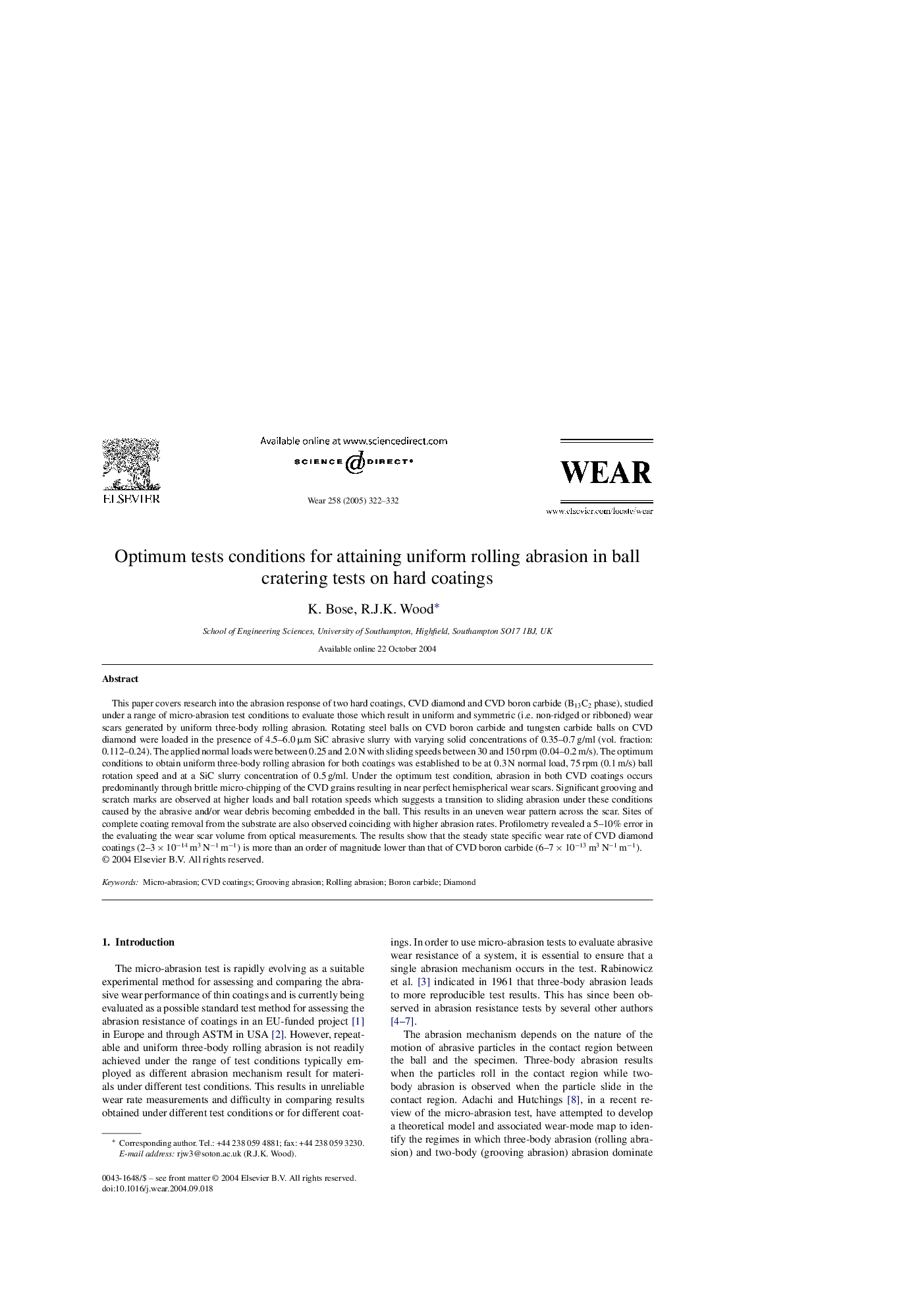| کد مقاله | کد نشریه | سال انتشار | مقاله انگلیسی | نسخه تمام متن |
|---|---|---|---|---|
| 9679627 | 1455085 | 2005 | 11 صفحه PDF | دانلود رایگان |
عنوان انگلیسی مقاله ISI
Optimum tests conditions for attaining uniform rolling abrasion in ball cratering tests on hard coatings
دانلود مقاله + سفارش ترجمه
دانلود مقاله ISI انگلیسی
رایگان برای ایرانیان
کلمات کلیدی
موضوعات مرتبط
مهندسی و علوم پایه
مهندسی شیمی
شیمی کلوئیدی و سطحی
پیش نمایش صفحه اول مقاله

چکیده انگلیسی
This paper covers research into the abrasion response of two hard coatings, CVD diamond and CVD boron carbide (B13C2 phase), studied under a range of micro-abrasion test conditions to evaluate those which result in uniform and symmetric (i.e. non-ridged or ribboned) wear scars generated by uniform three-body rolling abrasion. Rotating steel balls on CVD boron carbide and tungsten carbide balls on CVD diamond were loaded in the presence of 4.5-6.0 μm SiC abrasive slurry with varying solid concentrations of 0.35-0.7 g/ml (vol. fraction: 0.112-0.24). The applied normal loads were between 0.25 and 2.0 N with sliding speeds between 30 and 150 rpm (0.04-0.2 m/s). The optimum conditions to obtain uniform three-body rolling abrasion for both coatings was established to be at 0.3 N normal load, 75 rpm (0.1 m/s) ball rotation speed and at a SiC slurry concentration of 0.5 g/ml. Under the optimum test condition, abrasion in both CVD coatings occurs predominantly through brittle micro-chipping of the CVD grains resulting in near perfect hemispherical wear scars. Significant grooving and scratch marks are observed at higher loads and ball rotation speeds which suggests a transition to sliding abrasion under these conditions caused by the abrasive and/or wear debris becoming embedded in the ball. This results in an uneven wear pattern across the scar. Sites of complete coating removal from the substrate are also observed coinciding with higher abrasion rates. Profilometry revealed a 5-10% error in the evaluating the wear scar volume from optical measurements. The results show that the steady state specific wear rate of CVD diamond coatings (2-3 Ã 10â14 m3 Nâ1 mâ1) is more than an order of magnitude lower than that of CVD boron carbide (6-7 Ã 10â13 m3 Nâ1 mâ1).
ناشر
Database: Elsevier - ScienceDirect (ساینس دایرکت)
Journal: Wear - Volume 258, Issues 1â4, January 2005, Pages 322-332
Journal: Wear - Volume 258, Issues 1â4, January 2005, Pages 322-332
نویسندگان
K. Bose, R.J.K. Wood,